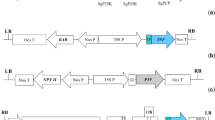Abstract
It is well known that Tn5B1-4 (commercially known as the High Five) cell line is highly susceptible to baculovirus and provides superior production of recombinant proteins when compared to other insect cell lines. But the characteristics of the cell line do not always remain stable and may change upon continuous passage. Recently an alphanodavirus, named Tn5 Cell Line Virus (or TNCL Virus), was identified in High Five cells in particular. Therefore, we established a new cell line, QB-Tn9-4s, from Trichoplusia ni, which was determined to be free of TNCL virus by RT-PCR analysis. In this paper, we describe the development of a novel cell clone, QB-CL-B, from a low passage QB-Tn9-4s cell line and report its susceptibility to AcMNPV, and the level of recombinant protein production. This cell clone was similar to its parental cells QB-Tn9-4s and Tn5B1-4 cells in morphology and growth rate; although it also showed approximately the same responses to AcMNPV infection and production of occlusion bodies, there were higher levels of recombinant protein production in comparison to QB-Tn9-4s (parental cells) and High5 cells.
Similar content being viewed by others
References
Clemm D L. 1992. Scale-up of protein production in a stirred bioreactor. In: Baculovirus Expression Vectors, a Laboratory Manual. New York: W.H. Freeman and Company. p241–248.
Davis T R, Trotter K M, Granados R R, et al. 1992. Baculovirus expression of alkaline phosphatase as a reporter gene for evaluation of production, glycosylation and secretion. Biotechnology, 10: 1148–1150.
Davis T R, Wickham T J, Mckenna K A, et al. 1993. Comparative recombinant protein production of eight insect cell lines. In Vitro Cell Dev Biol-Anim, 29A: 388–390.
Donaldson M S, Shuler M L. 1998. Effects of long-term passaging of BTI-Tn-5B1-4 insect cells on growth and recombinant protein production. Biotechnol Progr, 14: 543–547.
Granados R R, Li G, Blissard G W. 2007. Insect Cell Culture and Biotechnology. Virol Sin, 22(2): 83–93.
Granados R R, Li G, Derksen A C G, et al. 1994. A new insect cell line from Trichoplusia ni (BTI-Tn-5B1-4) susceptible to Trichoplusia ni singly enveloped nuclear polyhedrosis virus. J Invertebr Pathol, 64: 260–266.
Hayflick L. 1973. Theory of population increase by subcultivation.In: Tissue Culture Methods and Application. New York: Academic Press. p222–223.
Jarvis D L. 1997. Baculovirus expression vectors.In: The Baculoviruses. New York: Plenum Press. p389–431.
Li G, Hashimoto Y, Granados R R. 2003. Growth characteristics and expression of recombinant protein by new cell clones derived from Trichoplusia ni (BTI-Tn5B1-4) High Five cells. Bioprocessing, 2: 35–38.
Li T C, Scotti P D, Miyamura T, et al. 2007. Latent Infection of a New Alphanodavirus in an Insect Cell Line. J Virol, 81: 10890–10896.
Mckenna K A, Hong H, Vannunen E, et al. 1998. Establishment of new Trichoplusia ni cell lines in serum-free medium for baculovirus and recombinant protein production. J Invertebr Pathol, 71: 82–90.
Meng M, Li T, Li C, et al. 2008. A suspended cell line from Trichoplusia ni (Lepidoptera): characterization and expression of recombinant proteins. Insect Sci, 15: 423–428.
Wang P, Granados R R, Shuler M L. 1992. Studies on serum-free culture of insect cells for virus propagation and recombinant protein production. J Invertebr Pathol, 59: 46–53.
Wang P, Toung R, Granados R R. 1999. The establishment of new cell lines from Pseudaletia unipuncta with differential responses to baculovirus infection. In Vitro Cell Dev Biol-Anim, 35: 333–338.
Wickham T J, Davis T, Granados R R, et al. 1992. Screening of insect cell lines for the production of recombinant and infectious virus in the baculovirus expression system. Biotechnol Progr, 8: 391–396.
Wong K T K, Peter C H, Greenfield P F, et al. 1996. Low multiplicity infection of insect cells with a recombinant baculovirus: the cell yield concept. Biotechnol Bioeng, 49: 659–666.
Author information
Authors and Affiliations
Corresponding author
Additional information
Foundation items: This research was supported in part by the Chinese National Basic Research Program (973) 2009CB118900, Chinese National Science Foundation Project 30771451, and Boyce Thompson Institute Project BTI-QAU 1-23-2007.
Rights and permissions
About this article
Cite this article
Shan, M., Zhang, Sy., Jiang, L. et al. Susceptibility to AcMNPV and expression of recombinant proteins by a novel cell clone derived from a Trichoplusia ni QAU-BTI-Tn9-4s cell line. Virol. Sin. 26, 297–305 (2011). https://doi.org/10.1007/s12250-011-3201-1
Received:
Accepted:
Published:
Issue Date:
DOI: https://doi.org/10.1007/s12250-011-3201-1




